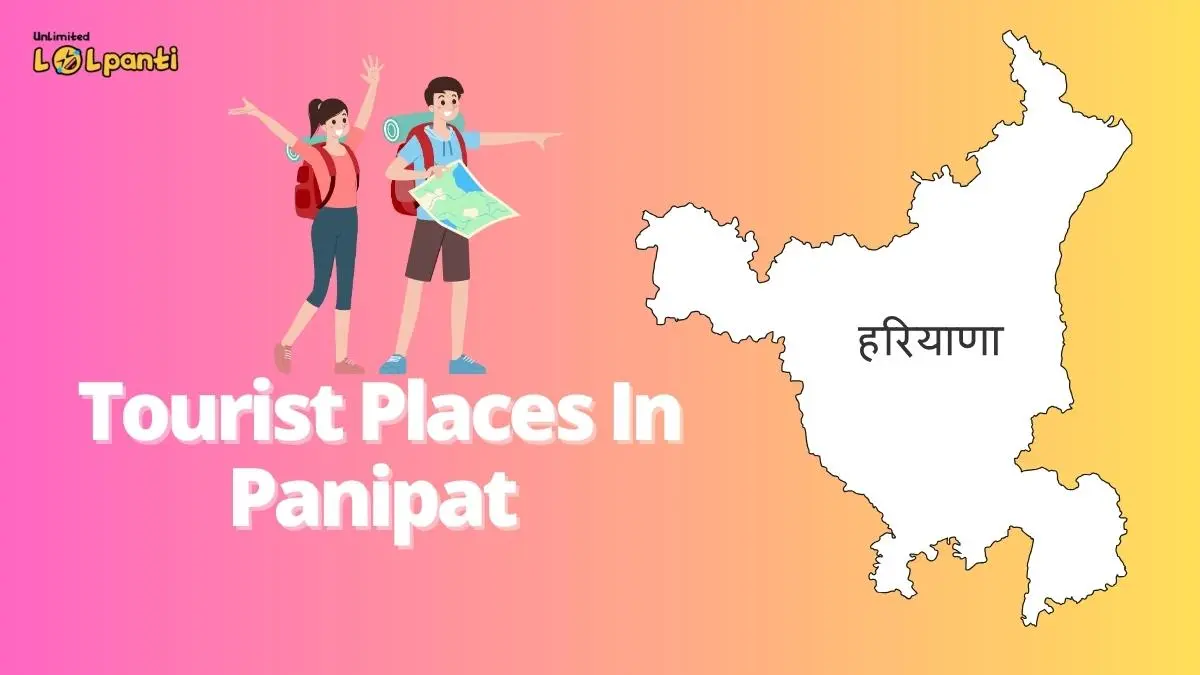Tourist Places In Panipat Haryana: Panipat is a district in India renowned for its craftsmanship in weaving and handloom. Its rich history dates back to the time of the Mahabharata, where it was one of the five villages that the Pandavas had demanded from Duryodhana. Later, it was named Panipat. Located 90 kms from Delhi on SherShah Suri Marg, this district has played a significant role in shaping Indian history with three major battles fought here.
Panipat District has gained a significant place in the international market as a top producer of handloom products. The district exports a range of goods such as Darri, carpet mats, table covers, bed sheets, bed covers, and curtains to countries like Canada, Japan, Germany, and Australia.
Panipat City itself is the largest centre of “Shoddy Yarn” in the world, while the sub-division of Samalkha is famous for its agriculture instrument foundry. The district continues to develop its industries, providing unlimited employment opportunities for businessmen, engineers, weavers, and laborers from not only Haryana, but other states of India who visit here in search of work and often settle permanently.
Welcome, fellow wanderers, to a journey through the historic city of Panipat. Panipat is known for its pivotal role in shaping the history of India, Panipat offers a rich curtain of battles, forts, and cultural heritage that awaits discovery. Join me as we explore the tourist gems that make Panipat a unique destination for history enthusiasts and curious travelers alike. This blog is giving information about the Tourist Places in Panipat, Haryana.
Panipat: At A Glance
Location: Panipat district is located along the Yamuna River and is bordered by Karnal, Sonipat, Jind, and Kaithal districts, as well as the state of Uttar Pradesh.
Linking Road: If you’re on the road, Panipat is easily accessible by National Highway No.1, situated just 90 km north of Delhi.
How To Reach Panipat
Here are the different modes of transportation to get to your destination i.e. Panipat, Haryana.
By Air: If you prefer air travel, the Indira Gandhi International airport is the closest one to the area, located 99 kms away. For more information, please contact your preferred airline.
By Rail: Panipat junction is highly accessible via railway. Popular trains that stop at this junction include Unchahar Express, Mussoorie Express, Jhelum Express, and Shatabadi. For Railway Enquiries, dial 139.
By Bus: Panipat is situated along National Highway No. 1, offering excellent bus connections to all the cities and towns of the neighbouring states. Haryana Roadways Volvo buses pass through Panipat.
For Haryana Bus Enquiries, dial 0180-2646544.
Tourist Places In Panipat
Panipat Museum
A visit to the museum offers a unique opportunity to view a vast array of antiquities, sculptures, inscriptions, arms and armor, pottery, valuable documents, jewelry, and other art objects on display. Among the highlights is a chance to witness the bravery of the valiant and patriotic warriors who sacrificed their lives in the Panipat battle, through photographs, write-ups, and trans-slides.
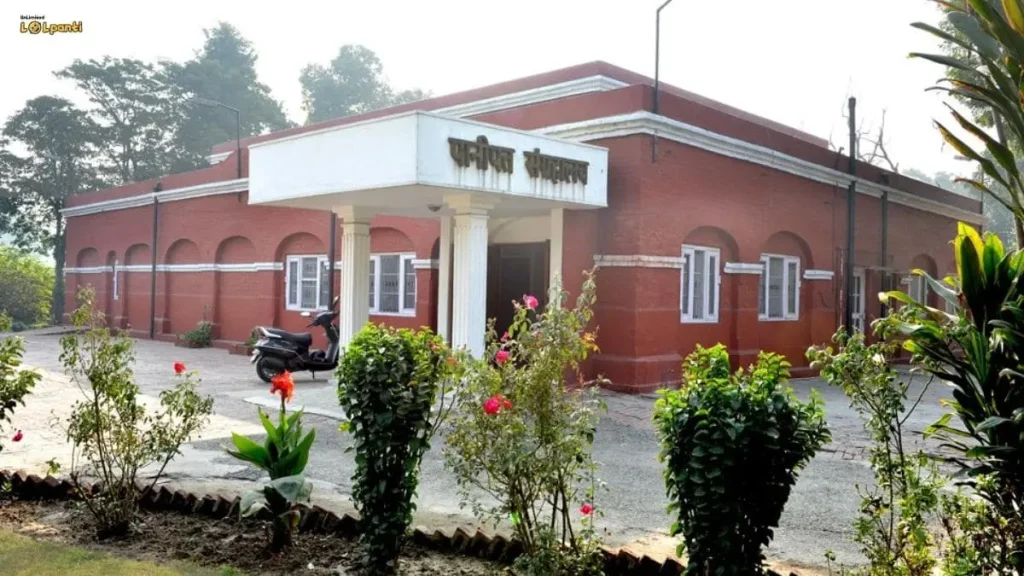
One of the museum’s main attractions is an exhibit of enlarged photographs of important miniatures, sourced from Baburnama and Akbarnama. These have been obtained from prestigious institutions such as the National Museum of New Delhi, The British Library, and Victoria and Albert Museum of London. The traditional artifacts and other items are mainly procured from various districts of Haryana, adding to the museum’s authenticity.
Kabuli Bagh Mosque
The Kabli Bagh Mosque, a significant Mughal structure in India, was erected by Babur in commemoration of his triumph over Sultan Ibrahim Lodhi in the First Battle of Panipat (1526 AD). The mosque is situated within a walled enclosure, featuring octagonal towers on each corner and a northern entrance. The entryway, made of red sandstone and bricks, is built in a lintel bracket style opening enclosed by a large arch, with arched recesses encased in rectangular panels adorning the spandrels. The main prayer hall takes a square shape and is flanked by annexes, with the high façade divided into lime-plastered panels. The annexes each contain nine bays crowned with hemispherical domes resting on low drums. Humayun expanded the mosque’s design by adding a masonry platform named Chabutra-i-Fateh Mubarak to commemorate his defeat of Salim Shah. The platform is inscribed with the king’s name and other builder details, dated back to 1527 AD.

Tomb of Bu-Ali-Shah Qalandar
Explore the historic tomb of Shaikh Sharafudeen Bu Ali Qalandar Panipati, a revered saint of the Chisti order who lived in India. The tomb, which is almost 700-years-old, is an embodiment of faith, harmony and integrity. People of all castes, creeds, and religions come together to offer prayers every Thursday, emphasizing the unity among diverse communities. The Urs Mela, an annual event held here, is a testament to the people’s beliefs and sense of community.
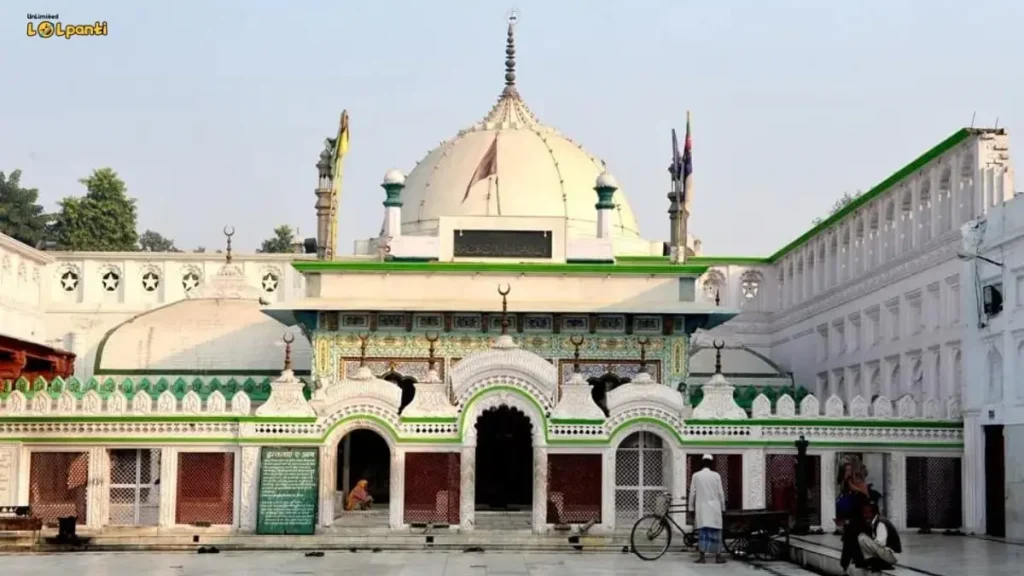
Located within the enclosure are two additional tombs, those of Hakim Mukaram Khan and Maulana Altaf Hussain Ali, a renowned Urdu poet of the era. Notably, the tomb site is close to Ibrahim Lodhi’s grave.
Babri Masjid
The history behind the original Babri Masjid is both intriguing and often overlooked. Legend has it that when Babur arrived in India in 1526, he fought and won a battle against Ibrahim Lodhi. As an expression of gratitude, Babur built a mosque on the site of Panipat. This mosque, known as the original Babri Masjid, is located in a small garden called the Kabuli Bagh and is currently under the protection of the Archaeological Society of India.
The mosque was originally constructed with seven arches, featuring a prominent central arch. Each arch of the mosque is adorned with a dome, with the central dome being the largest. Additionally, the mosque contains a water tank within its complex. According to the inscription on the mosque, it was completed during the years 1528-29.
Ibrahim Lodhi’s Tomb
Located in a park, maintained by the Panipat Municipal Committee, is the tomb of Ibrahim Khan Lodhi. It sits near the dargah of Sufi saint Bu Ali Shah and the tehsil office. The last Sultan of Delhi, Lodhi was defeated and killed in the First Battle of Panipat by Mughal emperor Babur on April 21, 1526. The tomb, made of Lakhauri bricks, consists of a rectangular open grave on a high double-terraced platform, accessible by a flight of steps from two sides. While the tomb has no architectural significance, it holds a significant place in history. An inscription near the grave notes that the tomb was rebuilt in 1867 AD by the District Administration during the British regime.
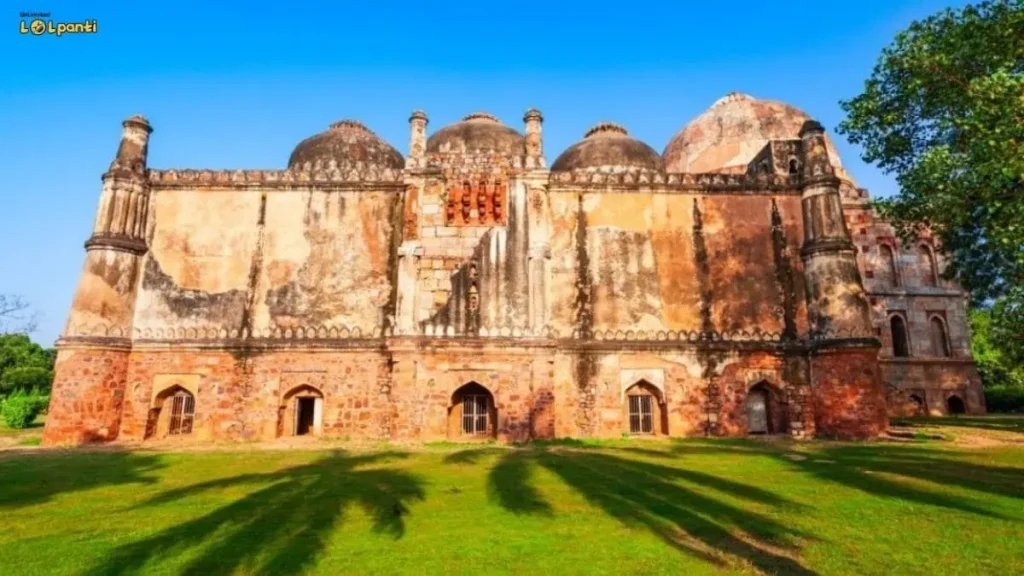
The Kala Amb Park
Kala Amb is a renowned location that witnessed the Third Battle of Panipat. Located 8 kilometers away from Panipat city, there is an interesting story behind its name. The Marathas came to North India with the aim of revolutionizing Indian polity, but they antagonized their potential allies, just like Ibrahim Lodhi. The Maratha forces clashed with the Afghan army, and the Marathas were surrounded while their supply lines and reinforcements were cut off. The battle resulted in a devastating loss for the Marathas, with up to 75,000 casualties, including senior commanders and Peshwa’s son. Today, Kala Amb Park stands on the outskirts of Panipat, marking the battlefield. Despite its tragic history, people come here for a peaceful stroll in the serene ambiance.
In one corner of the park, you’ll find a red obelisk that marks the spot where the Maratha commander, Sadashiv Rao Bhau, fell in battle. According to local tradition, a black mango tree once stood at this location, and it was under this tree that Bhau fought his last battle. Today, the black mango tree no longer exists, but the park has been named after it, hence the name: Kala Amb.
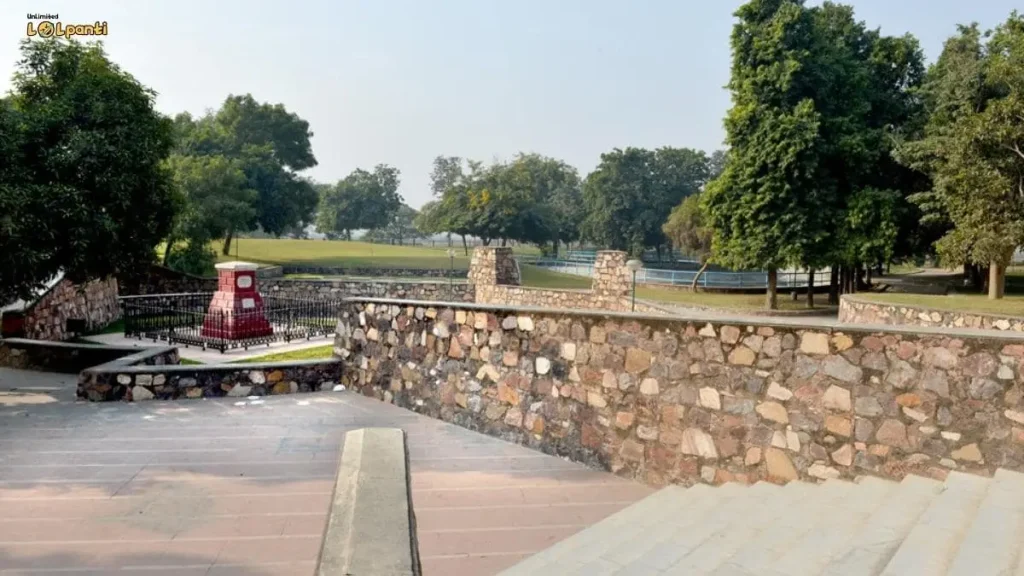
Devi Temple : Tourist Places in Panipat
For those seeking a spiritual interlude, the Devi Temple in Panipat offers a calm retreat. Nestled amidst greenery, this temple dedicated to Goddess Durga provides a peaceful escape and a glimpse into the religious fabric of the city.
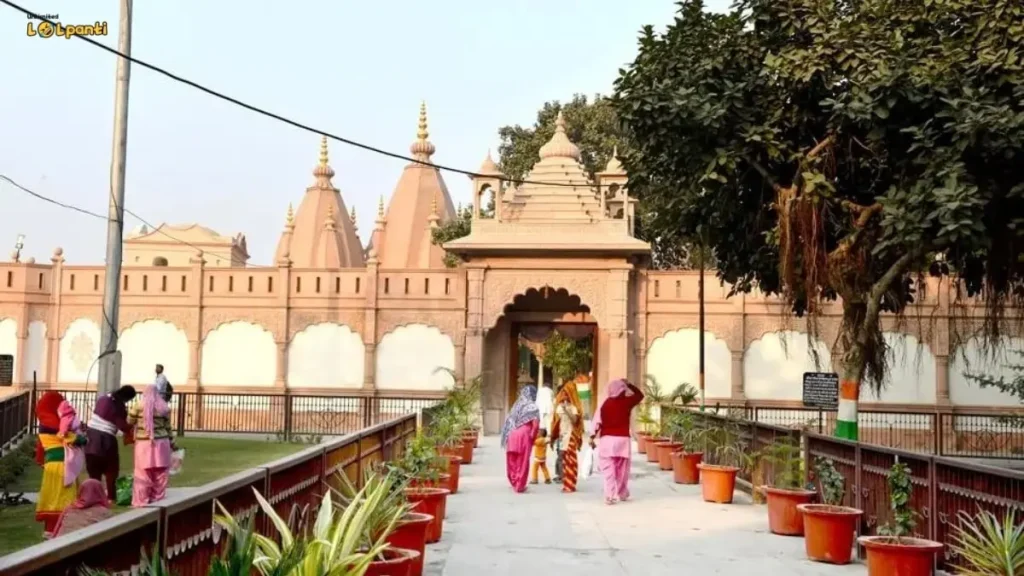
Salar Gunj Gate
Salar Gunj Gate, an architectural marvel, transports visitors to a bygone era. Originally an entrance to the city, the gate’s impressive structure and intricate detailing reflect the grandeur of its historical significance.
Panipat Shopping
No travel experience is complete without a taste of local culture. Panipat’s markets offer an array of traditional textiles, carpets, and handicrafts that make for perfect souvenirs. Dive into the bustling bazaars to bring home a piece of Panipat’s cultural vibrancy.
Final Word
Panipat, with its echoes of battles and whispers of history, invites travelers to step back in time. From museums preserving the past to architectural wonders standing as silent witnesses, Panipat unfolds a saga of resilience and cultural richness. So, pack your curiosity and embark on a journey through the pages of history in this often-overlooked gem of Northern India. I hope you fidn this post useful and get important information about Tourist Places in Panipat and ready to share its tales with those willing to listen. Safe travels!
Also Read:

